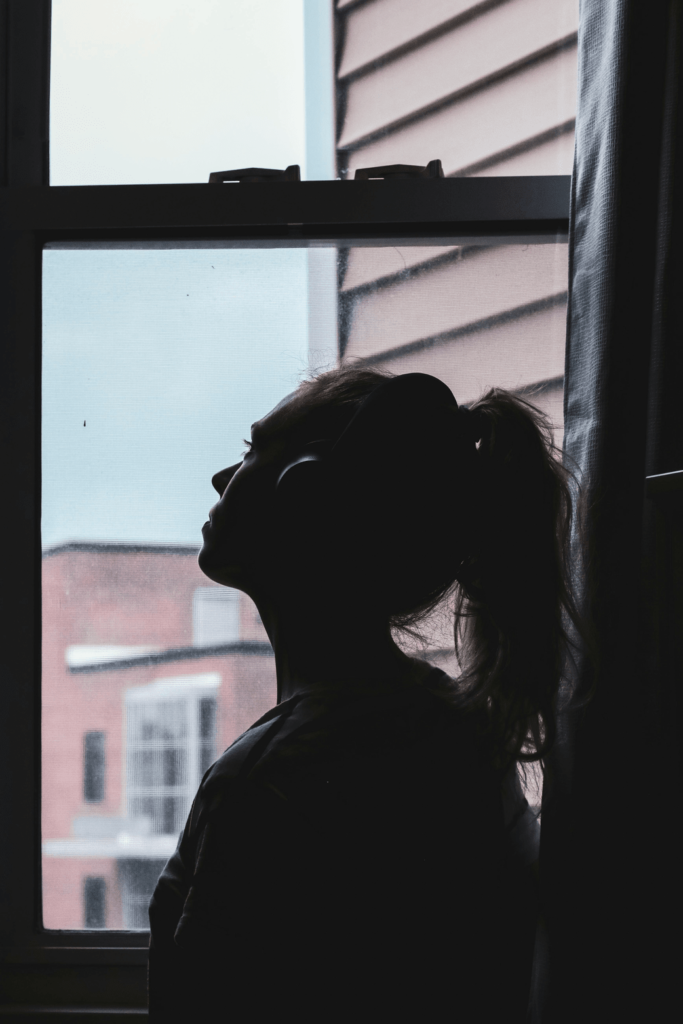Last updated on December 18th, 2024 at 03:25 am
- 1. Understanding Sleep Disorders
- 1.1 The Prevalence of Sleep Disorders
- 1.2 The Impact of Sleep Disorders on Health and Society
- 2. Hypersomnia: An Overview
- 2.1 Types of Hypersomnia
- 2.2 Symptoms of Hypersomnia
- 2.3 Causes of Hypersomnia
- 3. Narcolepsy: A Closer Look
- 3.1 Types of Narcolepsy
- 3.2 Symptoms of Narcolepsy
- 3.3 Causes of Narcolepsy
- 4. Differentiating Hypersomnia and Narcolepsy
- 4.1 Sleep Patterns
- 4.2 Cataplexy
- 4.3 Sleep Onset REM Periods (SOREMPs)
- 4.4 Response to Naps
- 5. Diagnosis of Hypersomnia and Narcolepsy
- 5.1 Clinical Evaluation
- 5.2 Sleep Studies
- 5.3 Additional Tests
- 6. Treatment Approaches for Hypersomnia and Narcolepsy
- 6.1 Pharmacological Interventions
- 6.2 Non-Pharmacological Approaches
- 6.3 Addressing Underlying Causes
- 7. Living with Hypersomnia or Narcolepsy
- 7.1 Occupational Considerations
- 7.2 Social and Relationship Impact
- 7.3 Educational Strategies
- 8. Future Directions in Research and Treatment
- 8.1 Biomarker Development
- 8.2 Gene Therapy
- 8.3 Novel Pharmacological Approaches
- 8.4 Neuromodulation Techniques
- Understanding the Complexity of Central Disorders of Hypersomnolence
- Idiopathic Hypersomnia: A Challenging Diagnosis
- Risk Factors and Triggers of Hypersomnia
- Narcolepsy with Cataplexy: A Defining Feature
- Narcolepsy Type 2: Less Severe but Still Debilitating
- Genetic and Autoimmune Factors in Narcolepsy
- Differential Diagnosis of Sleep Disorders
- Physical and Mental Health Impacts of Chronic Sleep Disorders
- Management Strategies: Lifestyle Modifications for Sleep Disorders
- Pharmacological and Non-Pharmacological Treatment Options
- Coping Strategies and Support Systems
- The Role of Medical Professionals in Treatment Planning
- Assessing Additional Symptoms and Comorbidities
- Imaging and Diagnostic Tests
- Future Research and Treatment Possibilities
- Obesity and Sleep Disorders
- Impact of Heavy Meals and Blood Sugar on Sleep Quality
- Chronic Fatigue and Its Relationship with Sleep Disorders
- Use of Anti-Anxiety Medications in Treatment Plans
- The Role of REM Behavior Disorder in Narcolepsy
- Cancer Treatments and Sleep Disorders
- Psychiatric Comorbidities in Narcolepsy and Hypersomnia
- Use of Antiviral Drugs in Emerging Sleep Treatments
- The Importance of Sleep Specialists in Managing Chronic Conditions
- Exploring Hypersomnia Prevalence and Its Effects on Daily Life
- Sleep Disorders and the Role of the Central Nervous System
- Conclusion
- Frequently Asked Questions
- What Are The Key Differences Between Idiopathic Hypersomnia And Narcolepsy?
- How Do Cataplexy Episodes Differ In Narcolepsy Type 1 Compared To Type 2?
- What Causes Hypersomnia, And How Does It Differ From Narcolepsy Causes?
- What Are Common Symptoms Of Hypersomnia And Narcolepsy?
- How Are Narcolepsy And Hypersomnia Diagnosed?
- What Is The Role Of REM Sleep In Diagnosing Narcolepsy?
- What Are The Treatment Options For Narcolepsy And Idiopathic Hypersomnia?
- How Can Lifestyle Modifications Help In Managing Hypersomnia Symptoms?
- What Medications Are Commonly Used For Narcolepsy With Cataplexy?
- What Is The Multiple Sleep Latency Test And How Is It Used?
- How Do Genetic Factors Contribute To Narcolepsy?
- How Does Idiopathic Hypersomnia Affect Quality Of Life?
- How Are Sleep Attacks In Narcolepsy Managed?
- What Are The Risk Factors Associated With Developing Hypersomnia?
- How Does Obstructive Sleep Apnea Contribute To Excessive Sleepiness?
- What Is The Difference Between Hypersomnia And Chronic Fatigue Syndrome?
- How Do Hypocretin Deficiency And Narcolepsy Connect?
- How Can Sleep Hygiene Improve Symptoms Of Hypersomnia?
- What Role Does Polysomnography Play In Diagnosing Sleep Disorders?
- Are There Any Effective Behavioral Therapies For Narcolepsy And Hypersomnia?
Sleep disorders are complex and multifaceted conditions that can significantly impact an individual’s quality of life. Among these disorders, hypersomnia and narcolepsy stand out as two conditions that share similarities but have distinct characteristics. Both involve excessive daytime sleepiness, but their underlying causes, symptoms, and treatment approaches differ considerably.
This comprehensive exploration will delve into the intricacies of hypersomnia and narcolepsy, shedding light on their unique features, diagnostic criteria, and management strategies.
Let’s discover the differences between Hypersomnia vs Narcolepsy, including symptoms, causes, and treatments, to better understand these sleep disorders and their impact.
1. Understanding Sleep Disorders
Sleep disorders encompass a wide range of conditions that affect the quality, timing, and duration of sleep. These disorders can have profound effects on physical health, mental well-being, and overall functioning. Before delving into the specifics of hypersomnia and narcolepsy, it’s crucial to understand the broader context of sleep disorders and their impact on society.
1.1 The Prevalence of Sleep Disorders
Sleep disorders are surprisingly common, affecting millions of people worldwide. According to recent epidemiological studies, an estimated 50-70 million adults in the United States alone suffer from some form of sleep disorder. This high prevalence underscores the importance of understanding and addressing these conditions.
1.2 The Impact of Sleep Disorders on Health and Society
The consequences of sleep disorders extend far beyond mere fatigue. Chronic sleep issues have been linked to a range of health problems, including:
– Cardiovascular diseases
– Metabolic disorders, such as diabetes
– Mental health issues, including depression and anxiety
– Cognitive impairment and decreased productivity
– Increased risk of accidents, particularly motor vehicle accidents
The economic impact of sleep disorders is also substantial, with billions of dollars spent annually on direct medical costs and indirect costs related to lost productivity and accidents.
2. Hypersomnia: An Overview
Hypersomnia is a sleep disorder characterized by excessive daytime sleepiness (EDS) and prolonged nighttime sleep. Individuals with hypersomnia often struggle to stay awake during the day, even after seemingly adequate nighttime sleep.
2.1 Types of Hypersomnia
Hypersomnia can be classified into two main categories:
Primary Hypersomnia: This type includes idiopathic hypersomnia and recurrent hypersomnia (Kleine-Levin Syndrome). Primary hypersomnia occurs without an apparent underlying medical condition.
Secondary Hypersomnia: This type is caused by other medical conditions, such as sleep apnea, depression, or certain medications.
2.2 Symptoms of Hypersomnia
The primary symptom of hypersomnia is excessive daytime sleepiness. However, other symptoms may include:
– Difficulty waking up in the morning
– Prolonged sleep episodes (more than 9-10 hours per night)
– Feeling unrefreshed even after long periods of sleep
– Cognitive difficulties, such as problems with memory and concentration
– Mood changes, including irritability and anxiety
2.3 Causes of Hypersomnia
The exact causes of primary hypersomnia are not fully understood. However, several factors may contribute to the development of secondary hypersomnia, including:
– Neurological disorders (e.g., multiple sclerosis, Parkinson’s disease)
– Psychiatric conditions (e.g., depression, bipolar disorder)
– Medical conditions (e.g., thyroid disorders, chronic fatigue syndrome)
– Medications (e.g., certain antidepressants, antihistamines)
– Substance abuse or withdrawal


3. Narcolepsy: A Closer Look
Narcolepsy is a chronic neurological disorder characterized by the brain’s inability to regulate sleep-wake cycles properly. It is less common than hypersomnia but can have a significant impact on an individual’s daily life.
3.1 Types of Narcolepsy
There are two main types of narcolepsy:
Type 1 Narcolepsy (with cataplexy): This form is characterized by excessive daytime sleepiness and sudden loss of muscle tone (cataplexy) triggered by strong emotions.
Type 2 Narcolepsy (without cataplexy): This type involves excessive daytime sleepiness but without cataplexy.
3.2 Symptoms of Narcolepsy
The hallmark symptom of narcolepsy is excessive daytime sleepiness, but other symptoms may include:
– Cataplexy (in Type 1 Narcolepsy)
– Sleep paralysis
– Hypnagogic or hypnopompic hallucinations
– Disrupted nighttime sleep
– Automatic behaviors (performing routine tasks without awareness)
3.3 Causes of Narcolepsy
The exact cause of narcolepsy is not fully understood, but research suggests several contributing factors:
– Genetic predisposition
– Autoimmune dysfunction
– Traumatic brain injury
– Infections
– Hormonal changes
In Type 1 Narcolepsy, there is a significant loss of hypocretin-producing neurons in the brain. Hypocretin (also known as orexin) is a neurotransmitter that plays a crucial role in regulating sleep-wake cycles.
4. Differentiating Hypersomnia and Narcolepsy
While both hypersomnia and narcolepsy involve excessive daytime sleepiness, there are key differences that help distinguish between the two conditions.
4.1 Sleep Patterns
Hypersomnia: Individuals with hypersomnia typically experience prolonged nighttime sleep and may have difficulty waking up in the morning. They may also take long naps during the day without feeling refreshed.
Narcolepsy: People with narcolepsy often have fragmented nighttime sleep and may experience sudden, uncontrollable sleep attacks during the day, even in inappropriate situations.
4.2 Cataplexy
Hypersomnia: Cataplexy is not a feature of hypersomnia.
Narcolepsy: Cataplexy is a defining characteristic of Type 1 Narcolepsy. It involves sudden loss of muscle tone, often triggered by strong emotions such as laughter or surprise.
4.3 Sleep Onset REM Periods (SOREMPs)
Hypersomnia: SOREMPs are not typically observed in hypersomnia.
Narcolepsy: Multiple SOREMPs are a diagnostic feature of narcolepsy, where individuals enter REM sleep much faster than usual, often within minutes of falling asleep.
4.4 Response to Naps
Hypersomnia: Individuals with hypersomnia may take long naps (1-2 hours or more) without feeling refreshed.
Narcolepsy: People with narcolepsy often feel refreshed after short naps (15-20 minutes), although the effect may be temporary.


5. Diagnosis of Hypersomnia and Narcolepsy
Accurate diagnosis of hypersomnia and narcolepsy is crucial for appropriate treatment. The diagnostic process typically involves a combination of clinical evaluation, sleep studies, and specialized tests.
5.1 Clinical Evaluation
A thorough medical history and physical examination are essential first steps in diagnosing both conditions. Healthcare providers will inquire about sleep patterns, daytime sleepiness, and other symptoms. They may also use standardized questionnaires, such as the Epworth Sleepiness Scale, to assess the severity of daytime sleepiness.
5.2 Sleep Studies
Polysomnography (PSG): This overnight sleep study monitors various physiological parameters during sleep, including brain activity, eye movements, muscle tone, and breathing patterns. PSG can help identify other sleep disorders that may be causing excessive daytime sleepiness.
Multiple Sleep Latency Test (MSLT): This daytime test measures how quickly a person falls asleep in a quiet environment. It is particularly useful in diagnosing narcolepsy, as it can detect SOREMPs.
5.3 Additional Tests
Hypocretin Level Measurement: In cases of suspected Type 1 Narcolepsy, a lumbar puncture may be performed to measure hypocretin levels in the cerebrospinal fluid. Low hypocretin levels are indicative of Type 1 Narcolepsy.
Genetic Testing: While not routinely used for diagnosis, genetic testing can help identify certain markers associated with narcolepsy, particularly the HLA-DQB1*06:02 allele.


6. Treatment Approaches for Hypersomnia and Narcolepsy
Treatment strategies for hypersomnia and narcolepsy aim to manage symptoms, improve quality of life, and address any underlying causes when possible.
6.1 Pharmacological Interventions
Stimulants: Medications such as modafinil, armodafinil, and methylphenidate can help improve alertness and reduce daytime sleepiness in both hypersomnia and narcolepsy.
Sodium Oxybate: This medication is particularly effective for treating both excessive daytime sleepiness and cataplexy in narcolepsy.
Antidepressants: Certain antidepressants, particularly selective serotonin reuptake inhibitors (SSRIs) and serotonin-norepinephrine reuptake inhibitors (SNRIs), may be used to manage cataplexy in narcolepsy.
Histamine H3 Receptor Antagonists: Newer medications like pitolisant work by increasing histamine levels in the brain, promoting wakefulness.
6.2 Non-Pharmacological Approaches
Sleep Hygiene: Maintaining a consistent sleep schedule, creating a sleep-conducive environment, and avoiding sleep-disrupting substances (e.g., caffeine, alcohol) can be beneficial for both conditions.
Scheduled Naps: Strategic napping can help manage daytime sleepiness, particularly in narcolepsy.
Cognitive Behavioral Therapy (CBT): CBT can help individuals develop coping strategies and manage the psychological impact of living with a chronic sleep disorder.
Lifestyle Modifications: Regular exercise, a balanced diet, and stress management techniques can contribute to overall sleep health and symptom management.
6.3 Addressing Underlying Causes
In cases of secondary hypersomnia, treating the underlying condition (e.g., sleep apnea, depression) may alleviate symptoms of excessive daytime sleepiness.


7. Living with Hypersomnia or Narcolepsy
Managing hypersomnia or narcolepsy extends beyond medical treatment. These conditions can significantly impact various aspects of an individual’s life, requiring ongoing adaptation and support.
7.1 Occupational Considerations
Individuals with hypersomnia or narcolepsy may face challenges in the workplace. Strategies to manage these challenges include:
– Discussing accommodations with employers, such as flexible work schedules or designated nap areas
– Choosing careers that allow for flexible hours or remote work
– Implementing safety measures for jobs that involve driving or operating machinery
7.2 Social and Relationship Impact
The symptoms of these sleep disorders can affect social interactions and relationships. Open communication with family, friends, and partners about the condition is crucial. Support groups can also provide valuable emotional support and practical advice.
7.3 Educational Strategies
For students with hypersomnia or narcolepsy, academic accommodations may be necessary. These might include:
– Extended time for exams
– Scheduled breaks during long classes
– Recording lectures for later review
– Working with disability services to develop an individualized education plan


8. Future Directions in Research and Treatment
The field of sleep medicine continues to evolve, with ongoing research into the mechanisms underlying hypersomnia and narcolepsy. Several promising areas of investigation may lead to improved diagnostic tools and treatment options in the future.
8.1 Biomarker Development
Researchers are working to identify reliable biomarkers for both hypersomnia and narcolepsy. These could lead to more accurate and less invasive diagnostic methods, potentially replacing or complementing current sleep studies.
8.2 Gene Therapy
For narcolepsy, particularly Type 1, gene therapy approaches targeting the production of hypocretin are being explored. While still in early stages, this could potentially offer a more targeted treatment approach.
8.3 Novel Pharmacological Approaches
New classes of medications are being investigated, including:
– Orexin receptor agonists for narcolepsy
– Histamine H3 receptor inverse agonists for both hypersomnia and narcolepsy
– Glutamate receptor modulators for potential symptom management
8.4 Neuromodulation Techniques
Non-invasive brain stimulation techniques, such as transcranial magnetic stimulation (TMS), are being studied for their potential in managing symptoms of hypersomnia and narcolepsy.
Understanding the Complexity of Central Disorders of Hypersomnolence
Central disorders of hypersomnolence encompass a variety of sleep disturbances, including idiopathic hypersomnia and narcolepsy. These conditions disrupt the sleep-wake cycle, leading to excessive daytime sleepiness and impairing quality sleep.
Understanding the complexities of these disorders is crucial for effective treatment and management strategies. Each disorder has unique symptoms that require careful assessment by healthcare providers.
Idiopathic Hypersomnia: A Challenging Diagnosis
Idiopathic hypersomnia remains a challenging condition to diagnose. It is characterized by prolonged nighttime sleep, excessive sleepiness, and difficulty waking up.
Unlike narcolepsy, idiopathic hypersomnia lacks cataplexy episodes. Diagnostic methods like polysomnography and the multiple sleep latency test help healthcare professionals differentiate idiopathic hypersomnia from narcolepsy.


Risk Factors and Triggers of Hypersomnia
Several risk factors can contribute to hypersomnia, including genetic predisposition, autoimmune disorders, and chronic health conditions such as obstructive sleep apnea. Environmental factors, such as stress and poor sleep hygiene, can also act as hypersomnia triggers.
These risk factors vary significantly, depending on whether the hypersomnia is primary or secondary in nature. Effective management requires identifying and mitigating these specific risk factors.
Narcolepsy with Cataplexy: A Defining Feature
Narcolepsy type 1, also known as narcolepsy with cataplexy, is characterized by excessive sleepiness combined with sudden loss of muscle control triggered by emotions. These cataplexy episodes differentiate narcolepsy type 1 from other central sleep disorders.
Sudden, intense emotions like laughter or surprise often trigger these episodes. This feature makes narcolepsy with cataplexy particularly disruptive for individuals in social settings.
Narcolepsy Type 2: Less Severe but Still Debilitating
Narcolepsy type 2 lacks cataplexy but still involves excessive daytime sleepiness and sleep-wake cycle disruptions. Individuals with this condition may experience frequent sleep attacks, which are unpredictable bouts of drowsiness or sudden sleep.
Narcolepsy type 2 also presents REM sleep abnormalities, where patients enter REM sleep unusually quickly after falling asleep. This can lead to disturbed nighttime sleep and daytime tiredness.
Genetic and Autoimmune Factors in Narcolepsy
Genetic factors, such as family history and specific alleles, play a significant role in narcolepsy development. Autoimmune dysfunction, specifically related to hypocretin deficiency, is implicated in the pathology of narcolepsy type 1.
Researchers believe that autoimmune factors in narcolepsy lead to a reduction in the neurons that produce hypocretin. Hypocretin is a key neurotransmitter involved in regulating wakefulness, and its deficiency contributes to excessive sleepiness.
Differential Diagnosis of Sleep Disorders
Differential diagnosis of sleep disorders involves distinguishing between conditions like idiopathic hypersomnia, narcolepsy, obstructive sleep apnea, and other central disorders of hypersomnolence. Sleep studies, including polysomnography and MSLT, are instrumental in identifying key features.
These features include sleep onset patterns, REM abnormalities, and the presence of cataplexy. Such distinctions help healthcare professionals formulate a comprehensive treatment plan.
Physical and Mental Health Impacts of Chronic Sleep Disorders
Chronic sleep disorders significantly impact both physical and mental health. Obstructive sleep apnea, for instance, affects blood oxygen levels and can contribute to cardiovascular complications, including high blood pressure and heart disease.
Additionally, patients suffering from hypersomnia or narcolepsy may experience psychiatric disorders, such as major depression or anxiety. These conditions often worsen symptoms of chronic sleepiness, further affecting quality of life.


Management Strategies: Lifestyle Modifications for Sleep Disorders
Effective treatments for hypersomnia and narcolepsy include a combination of medical interventions and lifestyle changes. Sleep hygiene practices and scheduled naps are commonly recommended for reducing excessive sleepiness.
Maintaining a consistent sleep schedule, avoiding sleep-disrupting substances, and incorporating healthy sleep hygiene practices are all essential parts of managing excessive daytime sleepiness. These modifications can help patients achieve better sleep regulation.
Pharmacological and Non-Pharmacological Treatment Options
Stimulants for hypersomnia, like modafinil, are frequently prescribed to help improve alertness. Sodium oxybate is effective in managing narcolepsy symptoms, including cataplexy episodes.
Non-pharmacological treatments, such as cognitive behavioral therapy for insomnia (CBT-I), can also assist patients in coping with the psychological effects of living with a chronic condition. These therapies are an important complement to medical treatment.
Coping Strategies and Support Systems
Living with a chronic condition like narcolepsy or idiopathic hypersomnia can be challenging. Support groups for narcolepsy and hypersomnia provide an essential network of emotional and practical support.
Sleep specialists may also recommend family intervention and cognitive behavioral therapy to improve overall health outcomes. These measures can help patients cope with symptoms like sleep inertia and sleep drunkenness.
The Role of Medical Professionals in Treatment Planning
Medical professionals play a crucial role in diagnosing and managing sleep-wake disorders. Developing a personalized treatment plan often involves collaborating with a healthcare provider, sleep specialist, and, when necessary, a mental health professional.
For instance, a treatment plan might include prescription drugs, behavioral therapy, and complementary therapies like melatonin supplements for sleep disorders. This multifaceted approach aims to address both physical and mental health aspects.


Assessing Additional Symptoms and Comorbidities
Individuals with hypersomnia or narcolepsy frequently present with additional symptoms, such as sleep paralysis and hypnagogic hallucinations. These symptoms complicate the clinical picture and require careful evaluation.
These symptoms are often accompanied by physical health checks to rule out other causes, such as neurodegenerative diseases or Rheumatic diseases. Identifying comorbidities is crucial to tailoring treatment effectively.
Imaging and Diagnostic Tests
Diagnostic tests, including imaging tests and blood tests, are sometimes used to identify underlying conditions contributing to hypersomnia or narcolepsy. For instance, neuroimaging can help assess structural abnormalities in the hypothalamus.
The hypothalamus plays a key role in regulating the sleep-wake cycle. These tests assist in ruling out other potential health conditions, such as brain tumors, that might contribute to sleep disturbances.
Future Research and Treatment Possibilities
Emerging research is investigating innovative treatments, such as deep brain stimulation and gene therapy, to address the root causes of narcolepsy and hypersomnia. These approaches hold promise for future advancements.
These advancements potentially lead to a cure for narcolepsy or more effective hypersomnia treatment options. Additionally, antiviral drugs and histamine receptor antagonists are being explored as possible therapies for excessive daytime sleepiness and other sleep-related disorders.
Obesity and Sleep Disorders
Obesity is a notable risk factor for both obstructive sleep apnea and hypersomnia. Excessive body weight can lead to restricted airways, exacerbating sleep-related breathing disorders like sleep apnea.
Managing weight through diet and exercise can significantly reduce symptoms of chronic sleep disorders. This also improves overall health outcomes for affected individuals.
Impact of Heavy Meals and Blood Sugar on Sleep Quality
Heavy meals before bedtime can negatively affect sleep quality and worsen sleep disorders. The digestion process and blood sugar fluctuations can contribute to sleep disturbances.
These factors can make symptoms of hypersomnia and narcolepsy worse. Frequent meals that are smaller in portion can help stabilize blood sugar levels and improve sleep quality.
Chronic Fatigue and Its Relationship with Sleep Disorders
Chronic fatigue is a common symptom of hypersomnia and narcolepsy. Persistent tiredness during the day, even after sufficient nighttime sleep, is often related to disrupted sleep architecture.
Addressing underlying causes of chronic fatigue, such as sleep deprivation or sleep-related breathing disorders, is essential for effective management. Treatment strategies must consider both sleep quality and daily energy levels.


Use of Anti-Anxiety Medications in Treatment Plans
Anti-anxiety medications are sometimes included in treatment plans to help manage the psychiatric comorbidities associated with hypersomnia and narcolepsy. Anxiety and stress can contribute to sleep disturbances.
This can lead to a vicious cycle of symptoms, which worsen over time. Medical professionals often work closely with mental health professionals to create a comprehensive plan that includes behavioral therapy and medications.
The Role of REM Behavior Disorder in Narcolepsy
REM behavior disorder is sometimes observed in patients with narcolepsy. This condition involves the physical enactment of dreams due to a lack of muscle atonia during REM sleep.
It is crucial for healthcare professionals to differentiate REM behavior disorder from other parasomnias when developing an appropriate treatment plan. Accurate diagnosis ensures the most effective intervention.
Cancer Treatments and Sleep Disorders
Cancer treatments, including radiation therapy and certain chemotherapy drugs, can exacerbate sleep disorders like hypersomnia. Patients undergoing cancer treatment may experience excessive daytime sleepiness due to the physical and psychological stress.
Addressing sleep issues through sleep medicine and complementary therapies can help improve patients’ quality of life during treatment. Managing sleep is an important aspect of overall cancer care.
Psychiatric Comorbidities in Narcolepsy and Hypersomnia
Patients with narcolepsy and hypersomnia often suffer from psychiatric comorbidities, including depressive disorder, major depression, and affective disorders. These mental health conditions can complicate the management of narcolepsy or hypersomnia.
They can make it more challenging to manage symptoms like sleep paralysis and sleep drunkenness. Mental health professionals can provide support through therapies like cognitive behavioral therapy to improve coping mechanisms.
Use of Antiviral Drugs in Emerging Sleep Treatments
Antiviral drugs are being researched as potential treatment options for hypersomnia and narcolepsy. Certain infectious diseases may trigger or exacerbate symptoms of hypersomnia.
Antiviral treatment may help alleviate these symptoms. Further studies are needed to confirm the efficacy of antiviral drugs in managing sleep disorders effectively.
The Importance of Sleep Specialists in Managing Chronic Conditions
Sleep specialists are instrumental in diagnosing and treating chronic sleep disorders like idiopathic hypersomnia and narcolepsy. By assessing individual sleep patterns and conducting sleep studies, these professionals can determine appropriate treatments.
Sleep clinics often work alongside healthcare providers to provide evidence-based clinical decision support for optimal patient care. These specialists offer crucial insight into both pharmacological and non-pharmacological interventions.
Exploring Hypersomnia Prevalence and Its Effects on Daily Life
Hypersomnia prevalence varies but affects a significant portion of the population. It leads to chronic sleepiness and negatively impacts daily activities.
Excessive sleep, frequent naps, and the inability to stay awake can hinder personal and professional responsibilities. Coping strategies for sleep disorders, such as behavioral sleep medicine and lifestyle changes, can enhance overall functioning and well-being.


Sleep Disorders and the Role of the Central Nervous System
Sleep disorders often involve dysfunction of the central nervous system. Conditions like idiopathic hypersomnia and narcolepsy are linked to CNS disorders affecting neurotransmitters like hypocretin, which regulates wakefulness.
Understanding the neurological basis of these disorders is essential for developing effective treatments. This understanding guides the development of targeted therapies that address the root causes of sleep disturbances.
Conclusion
While hypersomnia and narcolepsy share the common feature of excessive daytime sleepiness, they are distinct conditions with unique characteristics, diagnostic criteria, and treatment approaches. As research progresses, our understanding of these sleep disorders continues to deepen, offering hope for improved management strategies and potentially curative treatments in the future.
For individuals living with hypersomnia or narcolepsy, a multifaceted approach combining medical treatment, lifestyle modifications, and supportive strategies can significantly improve quality of life and daily functioning.
As awareness of these conditions grows, it is crucial to continue educating healthcare providers, employers, and the general public about the challenges faced by those with sleep disorders, fostering a more supportive and understanding society.
From Embrace Inner Chaos to your inbox
Transform your Chaos into authentic personal growth – sign up for our free weekly newsletter! Stay informed on the latest research advancements covering:
Narcissistic Personality Disorder (NPD)
Frequently Asked Questions
What Are The Key Differences Between Idiopathic Hypersomnia And Narcolepsy?
Idiopathic hypersomnia and narcolepsy are both central disorders of hypersomnolence, but they have distinct characteristics. Idiopathic hypersomnia primarily involves excessive daytime sleepiness without the presence of REM sleep abnormalities.
Narcolepsy often includes sleep attacks, cataplexy episodes, and REM sleep disturbances. According to the Cleveland Clinic, narcolepsy can also feature hypnagogic hallucinations and sleep paralysis, which are absent in idiopathic hypersomnia.
How Do Cataplexy Episodes Differ In Narcolepsy Type 1 Compared To Type 2?
Cataplexy is a hallmark of narcolepsy type 1, often involving sudden loss of muscle control triggered by strong emotions such as laughter or fear. This phenomenon is not present in narcolepsy type 2.
According to WebMD, narcolepsy type 2 patients still suffer from excessive daytime sleepiness and disturbed sleep patterns but lack cataplexy episodes. The absence of cataplexy often necessitates additional tests, like the multiple sleep latency test, to confirm the diagnosis.
What Causes Hypersomnia, And How Does It Differ From Narcolepsy Causes?
Hypersomnia can be triggered by a range of factors, including obstructive sleep apnea, certain medications, and neurological disorders. On the other hand, narcolepsy is often linked to hypocretin deficiency or autoimmune factors affecting the hypothalamus.
As described by Johns Hopkins Medicine, hypersomnia does not involve the same genetic and autoimmune components found in narcolepsy. Environmental factors and other health conditions, such as psychiatric disorders, can further exacerbate hypersomnia symptoms.
What Are Common Symptoms Of Hypersomnia And Narcolepsy?
The common symptoms of hypersomnia include prolonged sleep periods at night and difficulty waking, along with persistent daytime drowsiness. Narcolepsy, by contrast, includes sudden sleep attacks and REM sleep abnormalities, including cataplexy and vivid hallucinations during sleep onset.
Mayo Clinic states that while excessive sleepiness is shared by both disorders, narcolepsy is more likely to cause fragmented nighttime sleep and vivid dreams. Hypersomnia involves unrefreshing sleep despite adequate sleep duration.
How Are Narcolepsy And Hypersomnia Diagnosed?
Diagnosis of both narcolepsy and hypersomnia typically involves sleep studies like polysomnography and the multiple sleep latency test (MSLT). Polysomnography is used to rule out other conditions like sleep apnea, while MSLT measures how quickly a person falls asleep in a quiet environment.
According to the American Academy of Sleep Medicine, narcolepsy may be diagnosed if REM sleep occurs during these tests. Hypersomnia is indicated by prolonged sleep latency without REM abnormalities, and blood tests are sometimes used to rule out secondary causes of excessive sleepiness.
What Is The Role Of REM Sleep In Diagnosing Narcolepsy?
REM sleep plays a crucial role in diagnosing narcolepsy, particularly narcolepsy type 1, which is characterized by REM sleep abnormalities. REM sleep may occur at sleep onset or shortly afterward, a phenomenon identified during sleep studies.
According to Sleep Foundation, this early onset of REM sleep, often seen in the multiple sleep latency test, is a key differentiator between narcolepsy and other sleep disorders like idiopathic hypersomnia. The presence of REM sleep abnormalities often points to narcolepsy rather than other hypersomnolence conditions.


What Are The Treatment Options For Narcolepsy And Idiopathic Hypersomnia?
Treatment for narcolepsy often involves wakefulness-promoting agents such as modafinil and stimulants, along with antidepressants for cataplexy. Hypersomnia treatment generally includes lifestyle modifications and medications like stimulants to improve wakefulness.
Harvard Health states that cognitive-behavioral therapy and sleep hygiene practices are effective complementary treatments for both conditions. The choice of medication often depends on the severity of the symptoms and other health factors.
How Can Lifestyle Modifications Help In Managing Hypersomnia Symptoms?
Lifestyle changes, such as adhering to regular sleep schedules, reducing heavy meals before bedtime, and practicing good sleep hygiene, can alleviate hypersomnia symptoms. Avoiding alcohol and certain medications that induce sleepiness also helps in maintaining alertness.
National Institutes of Health (NIH) suggests that lifestyle modifications can enhance the quality of sleep at night and improve daytime functioning. These changes are often part of a broader treatment plan designed by a healthcare professional.
What Medications Are Commonly Used For Narcolepsy With Cataplexy?
Medications for narcolepsy with cataplexy typically include sodium oxybate, a drug that reduces cataplexy episodes and improves nighttime sleep quality. Stimulants like modafinil or methylphenidate are also used to manage excessive daytime sleepiness.
According to Stanford Health Care, antidepressants may be prescribed to help control symptoms like sleep paralysis and hypnagogic hallucinations, which are common in narcolepsy type 1. Treatment plans are tailored to individual needs, considering potential side effects.
What Is The Multiple Sleep Latency Test And How Is It Used?
The Multiple Sleep Latency Test (MSLT) is used to measure how quickly someone falls asleep in a quiet setting during the day. It is a crucial test for diagnosing narcolepsy, as it helps detect early REM sleep onset.
According to Mount Sinai Health, the test involves several nap opportunities over the course of a day to observe sleep patterns. Patients with narcolepsy often enter REM sleep much quicker than the average person, helping differentiate it from other sleep disorders.
How Do Genetic Factors Contribute To Narcolepsy?
Genetic factors, particularly a gene variation called HLA-DQB1*06:02, are closely associated with narcolepsy, especially type 1. This gene is involved in immune system regulation, which may explain the autoimmune nature of narcolepsy.
As reported by the National Sleep Foundation, this genetic predisposition, in combination with certain environmental triggers, can lead to the destruction of hypocretin-producing neurons in the brain. Hypocretin deficiency is a major contributor to the development of narcolepsy symptoms.
How Does Idiopathic Hypersomnia Affect Quality Of Life?
Idiopathic hypersomnia can significantly impact quality of life due to persistent sleepiness, difficulty focusing, and impaired social and work functioning. The unrefreshing sleep experienced by patients often leads to chronic fatigue and a sense of brain fog throughout the day.
Sleep Medicine Reviews indicates that the lack of restorative sleep makes it difficult for individuals to engage fully in daily activities. This can lead to mental health conditions such as anxiety and depressive disorders.
How Are Sleep Attacks In Narcolepsy Managed?
Sleep attacks in narcolepsy are managed primarily with stimulant medications and behavioral strategies aimed at maintaining consistent sleep schedules. Modafinil and amphetamines are commonly prescribed to help control excessive daytime sleepiness and prevent sleep attacks.
According to UCLA Health, behavioral therapy, including scheduled naps and maintaining good sleep hygiene, complements medical treatment to manage sleep attacks more effectively. The combination of these approaches is crucial to improve daytime alertness.
What Are The Risk Factors Associated With Developing Hypersomnia?
Risk factors for hypersomnia include a family history of sleep disorders, psychiatric conditions like depression, and other health issues such as obesity and sleep apnea. Mayo Clinic highlights that environmental factors, including stress and irregular sleep patterns, can also contribute to hypersomnia.
Medical professionals often look for these risk factors when diagnosing hypersomnia to differentiate it from other sleep conditions like narcolepsy. Narcolepsy is more genetically predisposed compared to hypersomnia.
How Does Obstructive Sleep Apnea Contribute To Excessive Sleepiness?
Obstructive sleep apnea (OSA) contributes to excessive sleepiness by repeatedly interrupting breathing during sleep, which leads to fragmented sleep and reduced oxygen levels. These disruptions prevent the body from reaching deep, restorative sleep stages, leading to daytime drowsiness.
According to American Sleep Apnea Association, untreated OSA can lead to hypersomnia, as the lack of quality sleep results in persistent fatigue and excessive daytime sleepiness. Continuous positive airway pressure (CPAP) therapy is often recommended to improve sleep quality.
What Is The Difference Between Hypersomnia And Chronic Fatigue Syndrome?
Hypersomnia is characterized by excessive sleep duration and difficulty staying awake, while chronic fatigue syndrome (CFS) primarily involves profound, unrelenting fatigue that doesn’t improve with rest. According to Johns Hopkins Medicine, CFS patients do not necessarily sleep longer than average but still feel extreme fatigue.
In contrast, hypersomnia often involves extended nighttime sleep and prolonged daytime napping, distinguishing it from CFS in both symptomatology and treatment approaches. This makes the management of these conditions quite different.
How Do Hypocretin Deficiency And Narcolepsy Connect?
Hypocretin, also known as orexin, is a neuropeptide that plays a crucial role in regulating wakefulness and REM sleep. A deficiency of hypocretin is primarily associated with narcolepsy type 1, leading to symptoms like sleep attacks, cataplexy, and REM sleep abnormalities.
National Institute of Neurological Disorders and Stroke (NINDS) explains that hypocretin deficiency is usually caused by an autoimmune response that destroys the neurons producing it. This is why narcolepsy type 1 is often referred to as an autoimmune disorder.
How Can Sleep Hygiene Improve Symptoms Of Hypersomnia?
Good sleep hygiene practices, such as setting a consistent sleep schedule, creating a relaxing bedtime environment, and avoiding caffeine or heavy meals close to bedtime, can help manage hypersomnia symptoms. According to American Academy of Sleep Medicine, sleep hygiene is a critical non-pharmacological approach for improving sleep quality and reducing daytime drowsiness.
These measures are often recommended alongside medications to support a more structured sleep-wake cycle and minimize symptoms. Consistency in sleep hygiene practices is essential for managing hypersomnia effectively.
What Role Does Polysomnography Play In Diagnosing Sleep Disorders?
Polysomnography, or a sleep study, measures various physiological factors during sleep, including brain activity, eye movements, heart rate, and breathing. It is a critical diagnostic tool for differentiating between sleep disorders like obstructive sleep apnea, narcolepsy, and hypersomnia.
Cleveland Clinic emphasizes that polysomnography is often conducted overnight to monitor for disruptions that could contribute to excessive daytime sleepiness. These disruptions may include respiratory issues or abnormal REM sleep patterns.
Are There Any Effective Behavioral Therapies For Narcolepsy And Hypersomnia?
Behavioral therapies, such as cognitive-behavioral therapy (CBT) and sleep scheduling, are often effective in managing the symptoms of both narcolepsy and hypersomnia. CBT focuses on modifying unhelpful beliefs about sleep, while scheduled naps help maintain alertness throughout the day.
Harvard Health points out that behavioral interventions can be especially useful when combined with medication. They target both the psychological and physiological aspects of sleep disorders, promoting overall quality of life.




